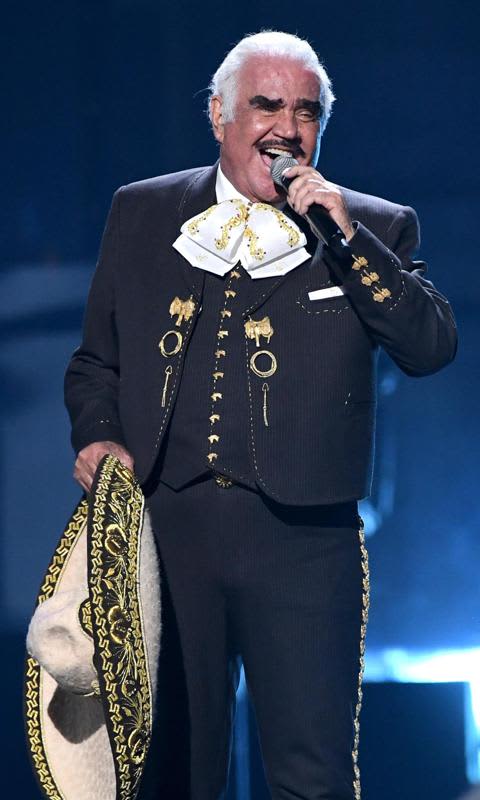’
El Rey, Vicente Fernández is now streaming on Netflix! If you’ve never heard of Fernández and are wondering if he is real, the answer is yes! The 15-episode biographic series tells the story of Vicente Fernández’s life, from his humble upbringing in Huentitan el alto, Jalisco, Mexico, to maintaining his position as Mexico’s greatest living singer for more than 40 years.
Starring Jaime Camil as Vicente Fernández, the series will share the singer’s life with viewers on a global scale. Known as “El Rey de la Música Ranchera” (the king of ranchera music) the singer is a cultural icon recording over 100 albums and starred in more than 30 films.
Born on February 17, 1940, “El Charro de Huentitán” (The Charro from Huentitán), was the son of rancher Ramón Fernández and homemaker Paula Gómez de Fernández. He received his first guitar when he was 8 and learned how to play it, and studied folkloric music.
He knew he was going to be a star with his official biography quoting him saying, “Some of my earliest memories, from when I was 6 or 7, are of going to see Pedro Infante movies and telling my mother, ‘When I grow up I want to be like them.’”
After winning a singing competition in Guadalajara when he was 14, he began performing in restaurants and weddings. The singer, unfortunately, lost his mother to cancer when he was around 23, in 1963, she was 47 years old.
The same year he lost his mother he married his neighbor in Guadalajera, María del Refugio “Cuquita” Abarca Villaseñor. The couple would go on to have four children: Vicente, Gerardo, Alejandro, and Alejandra. While his life changed, he never stopped following his dreams of becoming a singer.
When he was 24 he began performing with two of Guadalajara’s best mariachis which led him to meet Mexican singer and actor, Felipe Arriaga. Arriaga would later convince him to move to Mexico City.
By late 1965 he had pitched himself to all the major labels, but it wasn’t until the death of Javier Solis that he signed with CBS Mexico and recorded his first hits: “Tu Camino y El Mío,” “Perdóname” and “Cantina del Barrio.” From then, his career took off, and he was breaking sales records by the end of 1976.


